Moglix streamlined procurement for airport infrastructure operator through a VMI facility in UAE, to enhance efficiency and material availability.
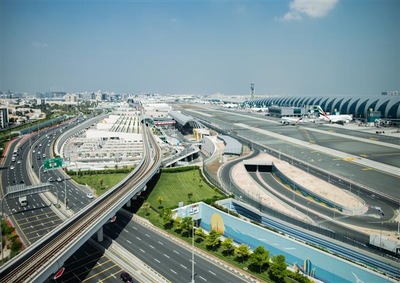
Moglix streamlined procurement for airport infrastructure operator through a VMI facility in UAE, to enhance efficiency and material availability.
Moglix streamlined procurement for airport infrastructure operator through a VMI facility in UAE,قراءة المزيد
Moglix enabled the UAE’s largest steel producer to save AED 5 million while drastically reducing PR-to-PO turnaround time.
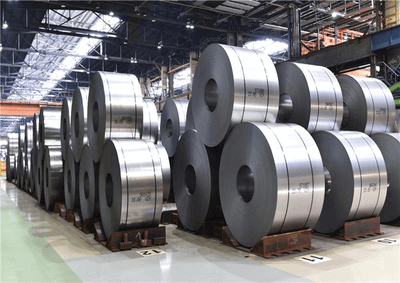
Moglix enabled the UAE’s largest steel producer to save AED 5 million while drastically reducing PR-to-PO turnaround time.
Moglix enabled the UAE’s largest steel producer to save AED 5 millionقراءة المزيد
Best Practices for CTOs to Implement Procurement Software Successfully
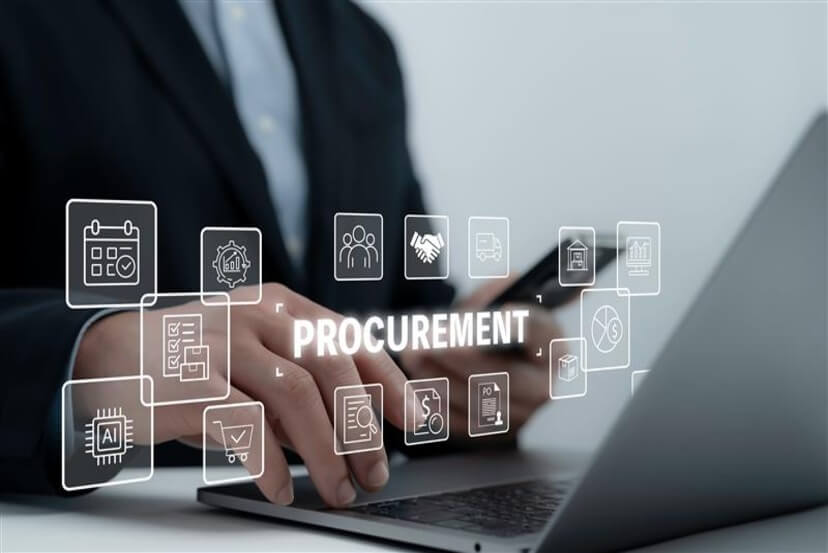
Best Practices for CTOs to Implement Procurement Software Successfully
Procurement software has emerged as a critical enabler of efficiency, transparency, and scalability in enterprise procurement.
As organizations continue to embrace digital transformation, Chief Technology Officers (CTOs) play a pivotal role in ensuring the successful deployment and integration of enterprise procurement software.
Implementing procurement technology isn’t just about plugging in a new tool—it requires thoughtful planning, cross-functional collaboration, and a clear roadmap to drive adoption and maximize ROI.
For CTOs tasked with leading this change, aligning procurement goals with IT strategy is essential.
In this article, we explore the best practices for CTOs to ensure the smooth implementation of digital procurement systems that deliver value and long-term impact.
1. Start with a Clear Business Case and Defined Objectives
Before any technology implementation, CTOs must work closely with procurement and finance teams to define clear goals and KPIs.
Is the aim of reducing maverick spending? Improve supplier visibility? Accelerate approval workflows?
A well-articulated business case provides direction and helps gain stakeholder buy-in across departments. It also sets the foundation for measuring success after implementation.
Key Tip: Quantify potential benefits such as time savings, error reduction, cost savings, or compliance improvement to support internal justification.
2. Choose the Right Procurement Software for Your Enterprise Needs
Not all procurement tools are created equal. CTOs should conduct a comprehensive evaluation of the organization’s needs—current and future—and select procurement software that aligns with both scale and complexity.
Factors to consider include:
- Cloud-based vs on-premises deployment
- Integration capability with existing ERPs, CRMs, and finance systems
- Customizability and scalability
- Supplier management and analytics features
- Compliance and audit trail functions
Key Tip: Prioritize solutions with robust APIs and modular architecture to future-proof your digital procurement stack.
3. Involve Cross-Functional Stakeholders from Day One
Implementing enterprise procurement software isn’t just an IT project—it’s an organization-wide initiative.
Procurement, finance, operations, and compliance teams all have vested interests in how the tool functions.
CTOs should bring stakeholders into the planning process early to:
- Collect detailed requirements
- Identify pain points in current workflows
- Set realistic timelines and milestones
- Ensure user-centric design and training readiness
Key Tip: Form a steering committee with representatives from each department to ensure alignment and accountability.
4. Ensure Seamless Data Migration and System Integration
A major hurdle in digital procurement adoption is the challenge of migrating legacy data and ensuring integration with existing business systems.
Clean, structured, and deduplicated data is essential for the success of the new system.CTOs must coordinate a robust data migration strategy that includes:
- Cleansing vendor master data
- Mapping chart of accounts
- Validating purchase history
- Creating automated data sync between systems
Key Tip: Conduct trial migrations in a sandbox environment to identify and correct errors before full-scale deployment.
5. Prioritize User Experience and Training
Even the most advanced procurement software can fail if end-users resist adoption. CTOs must advocate for a simple, intuitive user interface that minimizes friction.
Equally important is investing in a structured training program tailored to different user roles—buyers, approvers, finance teams, etc.
Consider a blend of live demos, video tutorials, helpdesk support, and user manuals.
Key Tip: Collect feedback during the pilot phase to refine user experience and address concerns early.
6. Leverage Automation and AI for Procurement Efficiency
Modern procurement platforms offer built-in automation and AI capabilities that help organizations eliminate repetitive tasks, gain predictive insights, and improve compliance.
CTOs should work with procurement leaders to implement:
- Automated approval workflows
- Intelligent purchase order generation
- Supplier performance dashboards
- Spend analytics and risk alerts
Key Tip: Start small—automate one or two processes first, then scale based on ROI and ease of adoption.
7. Monitor Performance and Optimize Continuously
Once the software is live, the journey doesn’t end. CTOs must collaborate with procurement teams to track performance metrics and optimize processes continuously.
Important KPIs to monitor include:
- Purchase order cycle time
- Cost per transaction
- Contract compliance rates
- Supplier satisfaction and SLA adherence
- User adoption rates
Key Tip: Set up quarterly reviews to evaluate system performance, user feedback, and emerging needs.
8. Ensure Robust Security and Compliance
As procurement systems handle sensitive vendor, pricing, and payment information, ensuring data security and regulatory compliance is a must.
CTOs should ensure the procurement software adheres to:
- Role-based access controls
- GDPR and regional data laws
- Secure audit trails
- Regular vulnerability assessments
Key Tip: Work closely with your cybersecurity team and software vendor to conduct periodic security audits.
CTOs as Enablers of Procurement Innovation
CTOs are uniquely positioned to bridge the gap between technology and business value.
By adopting a strategic, stakeholder-driven approach to procurement software implementation, CTOs can accelerate digital transformation and enable procurement to become a proactive, insight-driven function.
The benefits of successful procurement software deployment are clear—greater transparency, cost savings, better compliance, and enhanced collaboration across the supply chain.
Ready to transform your procurement operations with cutting-edge technology?
Mail your inquiries to emea@moglixbusiness.com or connect with our team at: https://business.moglix.ae/contact-us/
5 Common MRO Procurement Challenges and How CPOs Can Solve Them
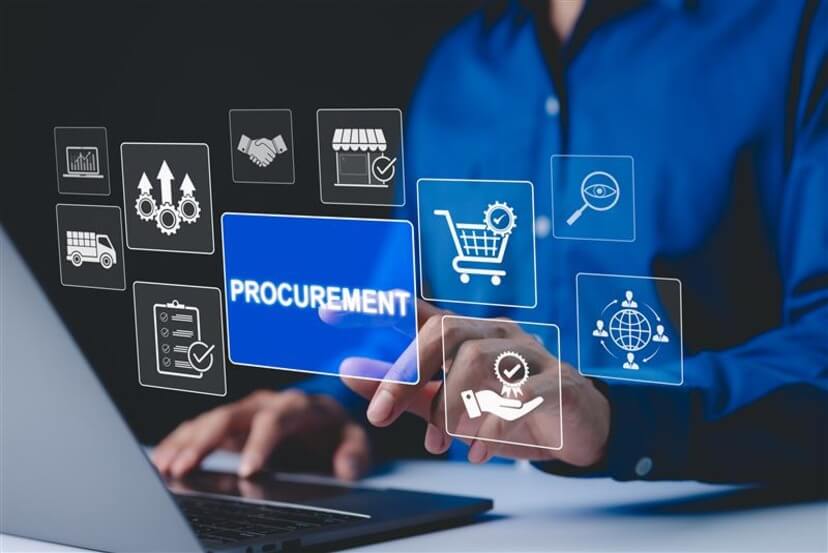
5 Common MRO Procurement Challenges and How CPOs Can Solve Them
MRO procurement—which covers Maintenance, Repair, and Operations supplies—is often one of the most overlooked areas in the procurement landscape.
However, for Chief Procurement Officers (CPO s) managing complex supply chains, the effective handling of MRO can significantly impact operational efficiency, downtime reduction, and overall cost optimisation.
Unlike direct materials, MRO items are often non-strategic, low-cost, and highly fragmented, making them difficult to manage.
From stock-outs of critical components to excess inventory and untracked spending, MRO procurement challenges can quietly erode an organisation’s efficiency and profitability.
In this blog, we uncover five common MRO procurement pain points and explore how forward-thinking CPOs can resolve them through strategic interventions and process innovation.
1. Lack of Visibility and Control Over MRO Spend
The Challenge:
MRO spend is typically scattered across multiple departments, locations, and suppliers, making it difficult for CPOs to track purchases or enforce standardization.
This often leads to maverick spending, poor contract compliance, and misalignment with corporate procurement goals.
The Solution:
To regain control, CPOs should centralize MRO procurement using digital platforms that enable real-time visibility into purchases across all locations.
Implementing a unified catalog and spend analytics tools can help track consumption patterns, identify savings opportunities, and eliminate off-contract purchases.
Key Tip: Align MRO spend data with your enterprise resource planning (ERP) system to streamline oversight and reporting.
2. Excessive Supplier Base and Fragmented Purchasing
The Challenge:
Many organizations rely on hundreds of MRO suppliers to fulfill thousands of low-value items, creating inefficiencies in procurement, invoicing, and vendor management.
This fragmented approach results in higher transactional costs, reduced negotiating power, and inconsistencies in quality and service levels.
The Solution:
CPOs should initiate a supplier rationalization program aimed at optimizing MRO purchasing by consolidating suppliers.
Strategic sourcing of preferred vendors and leveraging volume for better pricing and service agreements are key strategies.
Key Tip: Use a scorecard to evaluate suppliers on quality, delivery, pricing, and responsiveness before consolidation.
3. Poor Inventory Management and Stockouts
The Challenge:
Unreliable inventory management often leads to overstocking of non-essential items while running out of critical spares, causing unplanned equipment downtime and production delays.
In many cases, there’s no accurate picture of what’s in stock, where it’s located, or when it will be used.
The Solution:
Adopt a predictive inventory management system that integrates with plant operations.
CPOs can reduce MRO costs and increase availability by implementing just-in-time (JIT) replenishment strategies, automated reorder points, and barcode scanning.
Key Tip: Conduct regular inventory audits and apply ABC classification to prioritize critical items.
4. Decentralized Procurement and Inconsistent Processes
The Challenge:
When each facility manages MRO procurement independently, organizations face inconsistent purchasing practices, lack of compliance, and missed opportunities for bulk discounts.
These silos can also hinder visibility and delay maintenance activities.
The Solution:
Standardize procurement processes across all sites through centralized governance.
Create a unified procurement policy, mandate e-procurement tools, and define workflows for approvals, requisitions, and vendor engagement.
Key Tip: Empower site-level teams with clear SOPs while maintaining control through centralized monitoring.
5. Limited Focus on MRO Cost Reduction
The Challenge:
Because MRO items represent a small portion of total spend, they often don’t receive strategic attention.
However, inefficiencies in MRO can lead to hidden costs such as downtime, emergency purchases, and maintenance delays.
The Solution:
CPOs must shift from a transactional mindset to a strategic approach in MRO procurement.
Cost reduction opportunities lie in demand aggregation, contract renegotiation, supplier collaboration, and lifecycle cost analysis.
Leveraging data-driven insights and working closely with operations and maintenance teams is crucial.
Key Tip: Set MRO-specific KPIs such as cost per item, fill rate, and service level agreement (SLA) compliance to drive performance.
Strategic Takeaways for CPOs
MRO procurement may not always be in the spotlight, but the hidden inefficiencies in this space can have a disproportionate impact on the organization’s bottom line.
By addressing these five pain points head-on, CPOs can deliver:
- Reduced procurement costs through supplier consolidation
- Improved uptime with better inventory planning
- Enhanced visibility and control via digital procurement systems
- Greater compliance with centralized governance
- Sustainable, long-term value through continuous process improvement
With increasing emphasis on agility, cost efficiency, and supply resilience, optimizing MRO procurement is no longer optional—it’s a strategic imperative.
Want to streamline your MRO procurement operations?
Mail your inquiries to emea@moglixbusiness.com or get in touch with our team here: https://business.moglix.ae/contact-us/
Supplier Relationship Management in Indirect Procurement: A Strategic Approach for CPOs
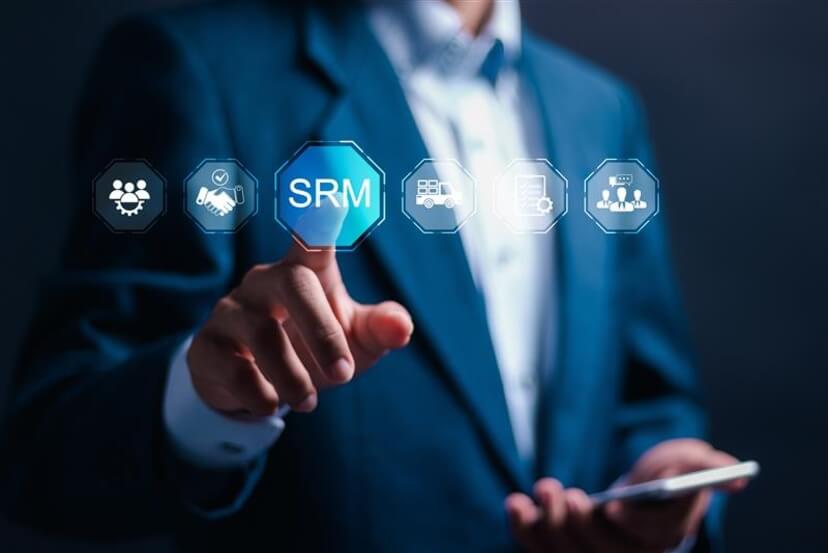
Supplier Relationship Management in Indirect Procurement: A Strategic Approach for CPOs
In today’s fast-paced business world, procurement has evolved beyond simply buying goods and services.
While direct procurement focuses on raw materials and production-related purchases, indirect procurement plays an equally vital role in boosting a company’s efficiency and success.
However, in many organizations CPOs struggle to manage their indirect suppliers effectively, resulting in hidden costs, inefficiencies, and missed opportunities.
This is where supplier relationship management (SRM) becomes essential.
A well-structured SRM strategy enhances operational efficiency, drives cost savings, and builds long-term strategic supplier partnerships.
By focusing on supplier performance evaluation, procurement digitalization, and supplier diversity programs, businesses can build stronger, more resilient supply chains.
Let’s explore why SRM in indirect procurement matters and how companies can make the most of it.
The Importance of Supplier Relationship Management in Indirect Procurement
Indirect procurement covers everything from office supplies and IT services to logistics and consulting.
Unlike direct procurement, indirect procurement suppliers often have diverse and dynamic requirements, making their management more complex.
A strong supplier relationship management strategy offers several advantages:
1. Improved Supplier Performance Evaluation
One key element of SRM is the continuous evaluation of supplier performance.
Businesses should assess suppliers based on key performance indicators (KPIs) like delivery timelines, service quality, cost-effectiveness, and responsiveness.
A systematic evaluation ensures that companies collaborate with high-performing suppliers while identifying and mitigating risks with underperforming ones.
How to implement this:
– Establish clear KPIs and expectations from suppliers.
– Conduct regular performance reviews and feedback sessions.
– Use data-driven insights to optimize supplier relationships.
– Leverage AI and analytics tools to monitor supplier performance in real time.
2. Procurement Digitalization for Efficiency
Technology plays a trans formative role in modern procurement strategies.
Procurement digitalization allows businesses to streamline supplier interactions, automate processes, and boost transparency.
Digital procurement platforms offer real-time analytics, automated invoicing, and improve supplier communication, thereby reducing inefficiencies and manual errors.
Benefits of digitizing procurement:
– Faster procurement cycles with automated workflows.
– Enhanced transparency in supplier performance and contract management.
– Reduced administrative burden, allowing procurement teams to focus on strategic initiatives.
– Greater agility in responding to market changes and supply chain disruptions.
3. Building Strategic Supplier Partnerships
A transactional approach to procurement limits growth opportunities. Instead, organizations must focus on strategic supplier partnerships that foster collaboration and innovation.
Strong supplier relationships lead to mutual trust, better pricing agreements, and improved service levels.
How to foster strategic supplier partnerships:
– Move beyond cost negotiations to value-based relationships.
– Engage suppliers in long-term business planning.
– Encourage open communication and joint problem-solving.
– Align supplier goals with business objectives for mutual success.
4. Implementing Supplier Diversity Programs
Supplier diversity programs promote inclusion by working with minority-owned, women-owned, and small businesses.
These programs not only contribute to social responsibility but also introduce fresh ideas, competitive pricing, and a more resilient supply chain.
Steps to integrate supplier diversity:
– Identify diverse suppliers and assess their capabilities.
– Provide support and training to help them meet business requirements.
– Set diversity goals and track progress over time.
– Partner with local and emerging suppliers to increase sourcing opportunities.
5. Risk Management and Compliance in SRM
Unmanaged supplier risks can result in financial losses and damage to reputation.
Businesses should proactively assess risks, ensure compliance with industry regulations, and establish contingency plans for supply chain disruptions.
Best practices for risk management:
– Regularly audit supplier compliance and financial health.
– Develop contingency plans for critical supplier failures.
– Leverage technology for real-time risk monitoring.
– Ensure suppliers adhere to ethical sourcing and sustainability standards.
6. Cost Optimization Through Effective SRM
A well-managed SRM strategy also leads to cost optimization.
By negotiating better terms, consolidating suppliers, and eliminating inefficiencies, businesses can achieve significant cost savings in indirect procurement.
Ways to optimize costs:
– Identify redundant expenses and eliminate wasteful spending.
– Leverage bulk purchasing agreements to secure discounts.
– Establish long-term supplier contracts with favorable pricing structures.
– Optimize logistics and inventory management for cost efficiency.
Summing Up
Supplier relationship management in indirect procurement is no longer an afterthought; it is a strategic necessity.
By implementing effective supplier performance evaluation, embracing procurement digitalization, nurturing strategic supplier partnerships, and promoting supplier diversity programs, businesses can unlock significant value and resilience in their supply chains.
Companies that invest in SRM not only improve efficiency but also foster innovation and secure long-term growth.
In a rapidly changing business landscape, strong supplier relationships can be the key differentiator between stagnation and success.
Now is the time to prioritize SRM and transform supplier collaboration into a strategic advantage. By taking proactive steps, businesses can enhance operational efficiency, drive down costs, and ensure sustainability in their procurement practices.
Those who embrace SRM today will be the industry leaders of tomorrow.
Digital Procurement: Key Technologies That Are Shaping the Future
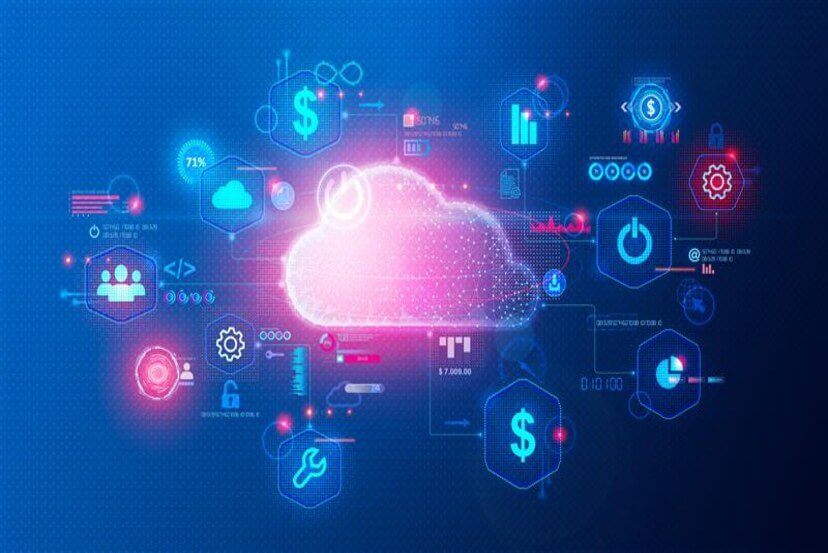
Digital Procurement: Key Technologies That Are Shaping the Future
Businesses today are shifting towards digital procurement solutions to make purchasing faster, smarter, and more cost-effective.
Today, businesses are increasingly adopting digital procurement solutions to accelerate purchasing, boost intelligence, and reduce costs.
Companies with rapid technological advances, procurement isn’t merely about cutting costs; it’s about boosting efficiency, strengthening supplier relationships, and driving growth
In this blog, we will explore the key digital procurement solutions that are transforming the way businesses manage their supply chains and procurement operations.
Digital Procurement Solutions: The Future of Smart Purchasing
Digital procurement solutions involve the use of advanced technology to automate and streamline procurement processes.
Traditional methods reliant on manual paperwork and spreadsheets are being replaced by innovative solutions that boost efficiency, transparency, and accuracy.
Some of the key digital procurement solutions include:
- Cloud-based procurement software for seamless procurement management
- E-procurement platforms that digitize purchasing workflows
- Supplier collaboration tools to improve communication and vendor relationships
- Smart procurement analytics to make data-driven purchasing decisions
Integrating these technologies enables businesses to optimize procurement operations and gain greater control over spending.
Procurement Technology Trends Reshaping the Industry
The emergence of new procurement technology trends is redefining how businesses handle purchasing. Some of the most impactful trends include:
1. AI and Automation in Digital Procurement Solutions
Artificial intelligence (AI) and automation play a crucial role in digital procurement solutions.
AI-powered systems analyze large volumes of procurement data to identify cost-saving opportunities, predict demand, and detect potential supply chain disruptions.
Some benefits of AI in procurement include:
- Automated supplier selection based on past performance and pricing
- AI-driven contract analysis to detect risks and compliance issues
- Chatbots for handling procurement inquiries and approvals
- Fraud detection to minimize financial risks
- Real-time alerts for supply chain disruptions
2. Leveraging AI makes procurement smarter and more proactive.
Cloud-Based Procurement Software for Seamless Operations
A major shift in procurement is the adoption of cloud-based procurement software.
This technology enables businesses to centralize procurement processes, making it easier to manage supplier relationships, track orders, and ensure compliance
Key advantages of cloud-based procurement software:
- Real-time access to procurement data from anywhere
- Reduced IT infrastructure costs
- Enhanced security and compliance management
- Easy integration with ERP and financial systems
- Scalability to support business growth
Companies using cloud-based procurement software can collaborate efficiently across departments and locations, ensuring smooth procurement operations.
3. E-Procurement Platforms for End-to-End Digital Transactions
E-procurement platforms are revolutionizing the way businesses purchase goods and services.
These platforms enable companies to digitize and automate procurement workflows, reducing paperwork and manual errors.
Features of e-procurement platforms include:
- Automated purchase requests and approvals
- Integration with supplier catalogs for seamless ordering
- Invoice matching and payment processing
- Spend analysis tools to track and control costs
- Customizable procurement policies to maintain compliance
With e-procurement platforms, businesses can reduce procurement cycle times, improve accuracy, and enhance compliance.
4.Supplier Collaboration Tools: Strengthening Vendor Relationships
Strong supplier relationships are essential for successful procurement.
Supplier collaboration tools help businesses communicate and coordinate effectively with vendors, ensuring timely deliveries and reducing disruptions.
Benefits of supplier collaboration tools:
- Improved transparency in supplier performance and order tracking
- Faster response times for order changes or issues
- Better contract management and compliance tracking
- Real-time communication for seamless collaboration
- Integration with supplier databases for efficient vendor management
Investing in supplier collaboration tools can lead to stronger partnerships and long-term cost savings.
Smart Procurement Analytics: Making Data-Driven Decisions
Smart procurement analytics enables businesses to make informed purchasing decisions based on real-time data.
By analyzing procurement trends and spending patterns, companies can identify cost-saving opportunities and optimize supplier selection.
Advantages of smart procurement analytics:
- Enhanced spend visibility to control costs
- Predictive analytics for demand forecasting
- Data-driven insights for supplier negotiations
- Real-time tracking of procurement KPIs
- Identification of cost reduction opportunities
With smart procurement analytics, businesses can reduce unnecessary expenses and drive procurement efficiency.
5.Blockchain Technology: Enhancing Security in Digital Procurement Solutions
Blockchain technology is emerging as a key player in digital procurement solutions, offering enhanced security, transparency, and efficiency.
By using blockchain, businesses can maintain tamper-proof records of transactions and improve trust in supplier relationships.
Benefits of blockchain in procurement:
- Enhanced transparency: Every transaction is recorded on an immutable ledger.
- Secure contracts: Smart contracts automatically enforce agreements.
- Reduced fraud: Secure authentication minimizes counterfeit risks.
- Faster payments: Automating invoicing reduces payment delays.
As blockchain adoption increases, procurement will become more secure, traceable, and efficient.
6.Internet of Things (IoT): Improving Supply Chain Visibility
IoT technology is playing a vital role in digital procurement solutions by enabling real-time monitoring of supply chain activities.
Connected devices and sensors provide valuable insights into inventory levels, shipment tracking, and equipment performance.
How IoT enhances procurement:
- Real-time inventory tracking: Avoid stockouts and over-purchasing.
- Predictive maintenance: Reduce downtime by monitoring equipment conditions.
- Enhanced logistics management: Track shipments accurately.
- Automated replenishment: IoT-enabled systems place orders when stock is low.
Integrating IoT into procurement strategies helps businesses maintain a smooth and efficient supply chain.
Embrace Digital Procurement Solutions with Moglix
As procurement continues to evolve, businesses must adopt digital procurement solutions to stay competitive.
Whether it’s cloud-based procurement software, e-procurement platforms, or supplier collaboration tools, leveraging the latest technologies can drive efficiency and cost savings.
If you’re seeking a trusted partner to modernize procurement operations, consider cutting-edge digital procurement solutions tailored to your business needs.
With a robust suite of digital procurement solutions, Moglix helps companies optimize spending, improve supplier management, and achieve procurement excellence.
Explore Moglix digital procurement solutions to transform your procurement strategy today!
Procurement Outsourcing: How CPOs & Businesses Can Cut Costs & Boost Efficiency
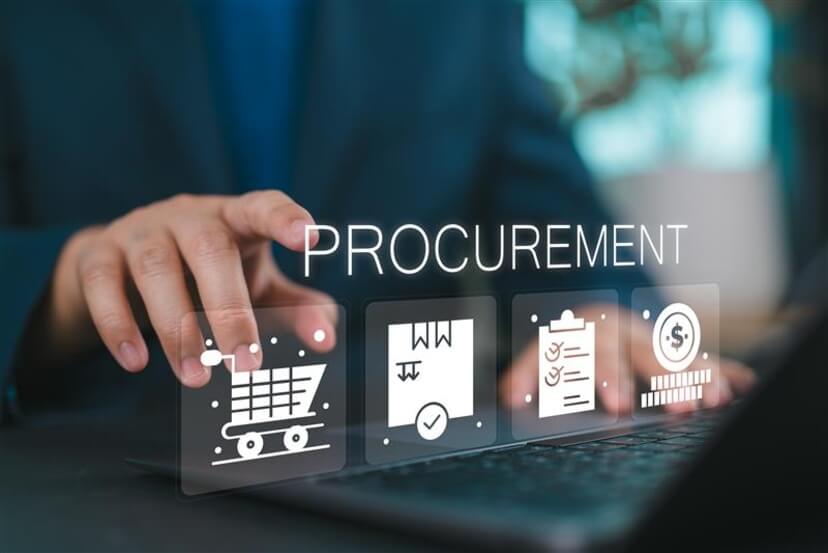
Procurement Outsourcing: How CPOs & Businesses Can Cut Costs & Boost Efficiency
In today’s rapidly evolving business landscape, companies constantly seek ways to reduce costs and boost efficiency.
One smart way to do this is through procurement outsourcing. For Chief Procurement Officers (CPOs) and businesses, outsourcing procurement tasks reduces hassle and frees up time to focus on core activities.
By handing over purchasing and supplier management to experts, companies can save money, reduce workload, and improve their overall operations.
In this blog, we will explore the benefits of procurement outsourcing, how it enhances efficiency, and the key strategies businesses can adopt to make the most of it.
Understanding Procurement Outsourcing
Procurement outsourcing involves delegating tasks like sourcing, purchasing, vendor management, and contract negotiations to a third-party provider.
It allows businesses to optimize their supply chain, reduce operational burdens, and achieve procurement cost savings without compromising on quality or compliance.
According to the 2025 State of Procurement Data Report by Amazon Business, procurement is evolving from merely a cost-cutting function to a strategic driver of growth and innovation.
This shift emphasizes the importance of supplier relationships and digital transformation in enhancing procurement effectiveness.
As procurement becomes more than just a cost-saving tool, businesses that leverage procurement outsourcing can stay ahead by focusing on strategic sourcing, supplier collaboration, and technology integration.
Benefits of Procurement Outsourcing for Businesses
Outsourcing procurement functions offers numerous advantages to organizations, regardless of size. Here’s how businesses can benefit:
1. Procurement Outsourcing Drives Procurement Cost Savings
One of the biggest reasons businesses opt for procurement outsourcing is to achieve significant procurement cost savings.
Third-party providers leverage their industry expertise, bulk purchasing power, and extensive supplier networks to secure better pricing and lower overhead costs.
Some ways procurement outsourcing reduces costs include:
- Optimizing supplier negotiations to secure better pricing
- Reducing administrative and operational expenses
- Streamlining the procurement process to avoid unnecessary purchases
- Minimizing risks related to vendor management
2. Procurement Outsourcing Enhances Indirect Procurement Solutions
Indirect procurement solutions involve purchasing goods and services that are not directly linked to manufacturing but are essential for daily business operations.
This includes office supplies, IT equipment, and facility maintenance services.
By outsourcing indirect procurement solutions, businesses can:
- Reduce maverick spending and ensure compliance with company policies
- Improve supplier consolidation and negotiation
- Gain better visibility into procurement spending
3. Strategic Sourcing Through Procurement Outsourcing
A well-planned procurement strategy relies heavily on strategic sourcing—analyzing and selecting suppliers for long-term value, not just cost.
Procurement outsourcing partners specialize in strategic sourcing by:
- Conducting market research to find cost-effective suppliers
- Implementing data-driven decision-making in supplier selection
- Enhancing contract negotiations to ensure long-term value
4. Vendor Management Becomes More Efficient with Procurement Outsourcing
Effective vendor management is essential for maintaining strong supplier relationships, ensuring timely deliveries, and mitigating risks.
Outsourcing vendors take on the responsibility of:
- Evaluating and managing suppliers
- Handling contract negotiations and compliance
- Monitoring vendor performance
- Resolving disputes or issues with suppliers
With procurement outsourcing, businesses no longer have to invest heavily in in-house vendor management teams.
5. Procurement Outsourcing Supports Business Process Outsourcing Strategies
Many organizations are increasingly adopting business process outsourcing (BPO) strategies to enhance efficiency.
Procurement is a vital part of BPO, allowing companies to streamline operations and focus on their core competencies.
By outsourcing procurement functions, businesses can:
- Improve agility and scalability
- Optimize resource allocation
- Enhance compliance and risk management
6. Technology and Digital Transformation in Procurement Outsourcing
Modern procurement outsourcing relies on technology-driven solutions to boost efficiency.
With the rise of automation, artificial intelligence, and cloud-based procurement platforms, businesses can gain real-time insights and optimize their procurement processes.
Some key technologies enhancing procurement outsourcing include:
- E-procurement platforms for digitized purchase management
- AI-driven analytics for smarter supplier selection
- Blockchain technology for secure and transparent transactions
- Robotic Process Automation (RPA) to streamline procurement workflows
By leveraging technology, businesses can make informed purchasing decisions and ensure seamless procurement operations.
Implementing a Successful Procurement Outsourcing Strategy
For businesses and CPOs considering procurement outsourcing, it’s essential to develop a well-structured procurement strategy. Here’s how to ensure a smooth transition:
1. Define Clear Objectives
Before outsourcing procurement, businesses must identify their goals, whether it’s procurement cost savings, efficiency improvement, or vendor consolidation.
2. Choose the Right Procurement Partner
Selecting a reliable procurement outsourcing provider is crucial. Businesses should assess providers based on:
- Industry expertise
- Track record and client reviews
- Technological capabilities
- Flexibility and scalability
3. Integrate Technology for Seamless Procurement Outsourcing
Digital transformation plays a key role in procurement outsourcing.
Businesses should leverage e-procurement platforms, automation tools, and data analytics to gain real-time insights into procurement activities.
4. Monitor Performance and Optimize Procurement Outsourcing Efforts
Regular performance evaluations help ensure that the procurement outsourcing strategy delivers the desired results.
Key performance indicators (KPIs) such as cost reductions, supplier performance, and procurement cycle time should be monitored.
Optimize Your Procurement Operations with Moglix
Procurement outsourcing is an effective solution for businesses looking to cut costs and boost efficiency.
From indirect procurement solutions to strategic sourcing and vendor management, outsourcing procurement activities can significantly enhance a company’s procurement strategy.
For CPOs and business leaders, embracing procurement outsourcing is not just about reducing costs, it’s about unlocking long-term value, improving supplier relationships, and gaining a competitive edge in the market.
If you’re looking for a trusted partner to streamline your procurement processes, consider Moglix’s cutting-edge solutions tailored to your needs.
With a vast supplier network, technology-driven procurement platforms, and a proven track record in procurement outsourcing, Moglix can help you achieve procurement cost savings and operational excellence.
Get in touch with Moglix today to transform your procurement strategy and drive efficiency like never before!
Why Is It Important for CPOs to Understand Procurement Compliance

Why Is It Important for CPOs to Understand Procurement Compliance
Procurement compliance in the UAE is a critical priority for Chief Procurement Officers (CPOs) tasked with managing supply chains and fostering vendor relations.
Amid rapidly evolving regulations under the UAE Government (UAE Gov), non-compliance can result in hefty fines, legal disputes, and harm to organizational reputation.
Understanding procurement compliance enables CPOs to align their practices with the law, ensuring efficiency and transparency while mitigating risks.
The Landscape of Procurement Compliance in the UAE
The UAE’s regulatory framework for procurement is structured to uphold ethical practices, drive economic growth and ensure transparency across supply chains.
CPOs must be familiar with several compliance aspects, including:
- Federal and Emirate-Level Laws:
Procurement laws in the UAE operate at both federal and emirate levels, necessitating a comprehensive understanding of regional nuances alongside overarching directives. - Vendor Prequalification:
Regulations mandate rigorous vetting processes to ensure suppliers meet quality, ethical, and financial standards.
- Government Initiatives:
Programs like Make It in the Emirates emphasize local sourcing and sustainable procurement, which CPOs must incorporate into their strategies.
- E-Procurement Adoption:
The UAE Gov is encouraging digital transformation in procurement, pushing businesses to adopt e-procurement solutions for better traceability and efficiency.
Why do CPOs need to Prioritize Procurement Compliance?
Risk Mitigation
Non-compliance exposes organizations to:
- Legal Penalties: Violations of procurement laws can lead to fines or project delays.
- Reputational Damage: Mismanagement can harm trust with stakeholders and the UAE Gov.
Cost Efficiency
Compliance with procurement regulations streamlines budgeting, eliminates unnecessary penalties, and enhances overall operational efficiency.
Enhancing Transparency and Trust
A strong focus on procurement compliance reflects ethical practices, and improving relationships with vendors, regulators, and investors.
Aligning with Strategic Goals
Procurement compliance supports broader organizational objectives, including sustainability, innovation, and local economic development initiatives championed by the UAE Gov
Key Compliance Challenges and How to Address Them
Staying Updated on Regulatory Changes
- Challenge: Frequent changes to procurement laws can be challenging to track and implement.
- Solution: Form a specialized compliance team or deploy AI-enabled procurement tools to monitor updates and ensure timely implementation.
Complex Approval Processes
- Challenge: Prolonged vendor approval and contract management timelines.
- Solution: Utilize e-procurement platforms to streamline workflows and minimize delays.
Diverse Stakeholder Expectations
- Challenge: Balancing regulatory compliance with internal stakeholder demands.
- Solution: Foster a culture of compliance by conducting regular training for procurement teams.
Case Study: Successful Procurement Compliance in the UAE
Problem:
A multinational corporation in the UAE encountered significant hurdles in vendor prequalification and audit compliance. They experienced delays in project execution and incurred penalties due to incomplete documentation.
Solution:
The company adopted a procurement solution tailored to UAE compliance needs. Key actions included:
- Automating vendor evaluations.
- Standardizing documentation processes to meet UAE Gov requirements.
- Conducting regular compliance audits using digital tools.
Outcome:
The organization achieved full compliance, minimized project delays by 30%, and enhanced its rapport with key government stakeholders.
The Role of Technology in Procurement Compliance
Digital tools are transforming procurement compliance in the UAE. E-procurement platforms provide:
- Automated Tracking: Monitor vendor performance and regulatory adherence in real time.
- Data Insights: Gain actionable intelligence to optimize procurement strategies.
- Audit Readiness: Ensure all documentation is readily available for regulatory reviews.
Integrating such digital tools not only streamlines compliance but also significantly boosts overall operational efficiency.
Conclusion
For CPOs, procurement compliance in the UAE extends beyond avoiding penalties; it is about aligning with government initiatives, embedding ethical practices, and achieving strategic objectives.
By staying informed on regulatory changes, leveraging technology, and fostering a culture of compliance, procurement leaders can navigate the complexities of the UAE’s regulatory environment effectively.
Investing in procurement solutions customized for the UAE market is pivotal to achieving long-term success and ensuring seamless operations in this dynamic region.
Decoding key laws that have impacted business in the UAE

Decoding key laws that have impacted business in the UAE
A study of international supply and trade over the past few years reveals a fascinating insight — the UAE has emerged as one of the largest supply chain nerve centers on a global scale. In its recent study titled ‘Destination Digitalisation: The Future of Logistics, ADQ uncovered predictions that the UAE’s logistics market is poised to grow phenomenally by 2026 — at 8.41% annually to reach the $31.4 billion mark.
Much of the region’s logistics success story can be traced back to the UAE’s favorable procurement supply chain regulations. Here is a preview of some such legal provisions.
UAE’s free zone law
Free zones in the UAE are designated areas where foreign investors can establish and operate a business without needing a local sponsor. Operating in a free zone comes with benefits like 100% foreign ownership, 100% repatriation of capital and profits, more relaxed import and export regulations and, above all, exemptions from certain taxes and tariffs.
The region’s FDI regulations
The United Arab Emirates (UAE) has a relatively open policy towards foreign direct investment (FDI) and actively encourages investment in the country through various incentives. FDI regulations in the UAE allow for 100% foreign ownership of companies in most sectors, except for some like oil & gas and media.
By protecting foreign investors through bilateral investment treaties with many countries, the UAE has cemented its position as a central hub for businesses worldwide.
Tax regulations in the UAE
Although the standard VAT rate of 5% applies to the supply of most goods and services within the UAE, some supplies are exempt from VAT or carry a 0% tax rate. For instance, supplies for the export of goods/services to countries outside of the GCC and supplies related to international transportation are subject to zero-rated tax. These beneficial provisions reduce the overall cost of procurement of such supplies in the region.
Customs regulations in the UAE
The UAE is home to 12 commercial trading ports, and over 60% of the incoming cargo in the GCC arrives through the region’s seaports. Moreover, UAE’s strong and beneficial customs regulations make commercial activity via seaports lucrative for various international suppliers. As a result, the region has exempted all goods imported into FTZs from customs duties. Further, re-exports from these free zones are not liable to duties and taxes.
Want to expand your business in the UAE?
If you answered yes, it is vital to understand the different laws in the UAE that impact procurement. This way, you can manage compliance efficiently and take advantage of the laws in the region that promote supply chain mobility. With a procurement supply chain partner like Moglix, you work with business that are complaint with laws and regulations that govern the region, ensuring seamless business setup and operations. Know More
The role of digitization in meeting ESG procurement goals

The role of digitization in meeting ESG procurement goals
Sustainability and ESG frameworks are becoming increasingly crucial for businesses across sectors today. As Boston Consulting Group reports, over 80% of companies intend to increase their investments in sustainable practices. In this regard, procurement and supply chain are crucial, given that around two-thirds of the average business’s ESG footprint can be traced back to their partner suppliers.
Building a practical ESG framework for procurement can put your business on the leaderboard in your industry. And digitization plays a pivotal role in accelerating the journey to sustainable purchases. However, before identifying the best practices for sustainable procurement, it is essential to understand the importance of ESG criteria in meeting sustainability goals.
The role of ESG criteria in meeting sustainable procurement goals
Although environmental-friendly processes feature right at the top of the list, sustainability is about more than just this. It encompasses all business operations that can be sustained continuously over time — without affecting the ability of future generations to meet their needs. ESG criteria that focus on environmental, social and governance aspects make this possible.
Including these criteria in supply chain management enables businesses to experience the whole gamut of the benefits of sustainable procurement processes. This includes increased cost savings, reduced risk, easier compliance, improved brand reputation and a future-proof procurement strategy.
Practically speaking, here are some examples of sustainable procurement processes that can be integrated into your business’s ESG framework for procurement:
- Identifying comprehensive ESG criteria to implement in the supply chain
- Transparent supplier evaluation and onboarding based on the above criteria
- Aligning ESG goals with procurement goals for improved efficiency
Digitization: The way forward for sustainable procurement processes
For Chief Procurement Officers (CPOs) keen on implementing sustainable procurement best practices today, digitization is an underrated and often overlooked tool. Here is a closer look at how the right technological and digital solutions can quicken the adoption of sustainability in procurement.
It helps capture ESG data
Data is crucial in the shift from conventional to sustainable procurement practices. Digitization makes it easier to capture ESG data across the supply chain. This puts businesses in a better position to use these insights and streamline organizational procurement.
It improves transparency and traceability
Technology also brings greater transparency and visibility across the supply chain. As a result, it becomes easier for your business to trace and track vulnerable areas, so you can quickly address these weaknesses before they adversely impact your ESG goals.
It minimizes resource wastage
Above all, with the use of Artificial Intelligence (AI), it becomes possible to avoid procuring obsolete inventory, facilitate logistical moves that reduce carbon emissions and monitor waste (and minimize) generation in the procurement process.
Make the switch to sustainable procurement
A partner like Moglix can facilitate the right kind of digital transformation in your enterprise procurement journey. Moglix with its comprehensive and end-to-end digitization solutions speeds up your journey towards a more sustainable and ESG goal aligned procurement ecosystem. Know more about this.

